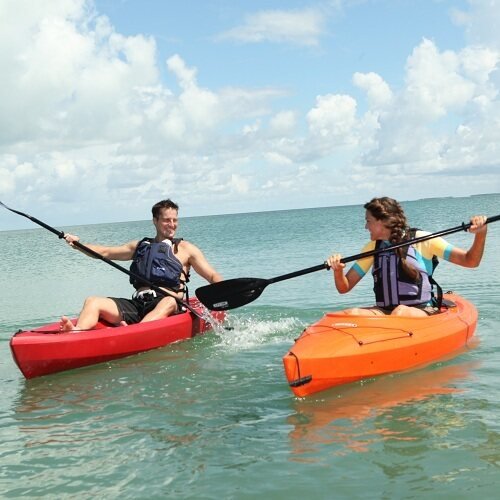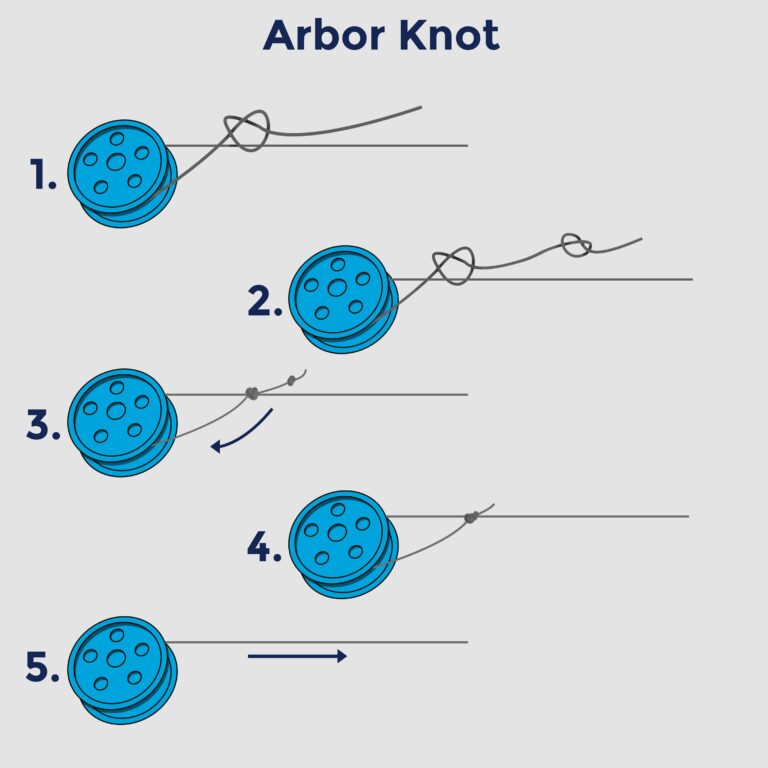Comparing Sit On Top Kayak Vs. Sit In Kayak: Which Is Better?
Are you torn between a sit on top kayak and a sit in kayak? Well, you’ve come to the right place! In this article, we’ll delve into the sit on top kayak versus sit in kayak debate and help you determine which one is best suited for your needs. Whether you’re a seasoned kayaker or a beginner looking to dip your paddle into the world of kayaking, understanding the differences between these two types of kayaks is crucial. So, let’s jump right in and explore the pros and cons of sit on top kayaks and sit in kayaks to help you make an informed decision. Choose wisely, as the right kayak can make all the difference in your water adventures.
Sit on Top Kayak vs Sit in Kayak
Kayaking is a versatile and enjoyable outdoor activity that allows you to explore water bodies while staying close to nature. When it comes to choosing the right kayak, one important decision to make is whether to go for a sit on top kayak or a sit-in kayak. Both types have their own advantages and considerations, and in this article, we will delve into the details of each to help you make an informed choice. Let’s explore the differences, benefits, and drawbacks of sit on top kayaks and sit-in kayaks.
Sit on Top Kayaks
Sit on top kayaks, as the name suggests, feature an open-top design where the paddler sits on the kayak’s surface rather than inside a cockpit. These kayaks are popular for recreational purposes, fishing, and even for use in more challenging conditions. Here’s a deeper look at the various aspects of sit on top kayaks:
1. Stability
Sit on top kayaks are known for their excellent stability, making them a great choice for beginners. The open design allows paddlers to easily enter and exit the kayak, and there is less risk of feeling confined or claustrophobic. The wider base and higher center of gravity make these kayaks more stable and less prone to tipping over.
2. Self-Bailing
One of the significant advantages of sit on top kayaks is their self-bailing feature. These kayaks have scupper holes or drain plugs that allow any water that enters the kayak to drain out. This feature is particularly useful in rough waters or if you capsize. You can quickly get back on the kayak without worrying about removing water from the cockpit.
3. Versatility
Sit on top kayaks are versatile and can be used in various water conditions. Whether you want to paddle on calm lakes, go fishing, or even venture into the ocean, sit on top kayaks can handle different environments. Their stability and ease of use make them great for recreational activities and family outings.
4. Accessibility
Another advantage of sit on top kayaks is their accessibility. The open design allows for easy entry and exit, making them more suitable for individuals with mobility issues or those who don’t feel comfortable in enclosed spaces. Additionally, you have more freedom of movement and can stretch your legs or change positions during longer trips.
5. Safety
Sit on top kayaks are generally considered safer than sit-in kayaks. In case of a capsize, you don’t need to worry about getting trapped in the cockpit. Paddlers can easily swim to the surface or climb back onto the kayak from the water. This feature makes sit-on-top kayaks more popular for recreational kayaking, especially for those who are less experienced.
6. Gear Storage
Sit on top kayaks typically have enough space for gear storage. They often come with built-in storage wells or hatches where you can keep your fishing equipment, cooler, or other essentials. Some models even have attachment points for additional gear and accessories, making them ideal for fishing enthusiasts or those who like to carry extra gear on their trips.
Sit-in Kayaks
Sit-in kayaks are the traditional style of kayaks where the paddler sits inside a cockpit, with their lower body enclosed by the kayak’s hull. These kayaks have been around for centuries and offer their own set of advantages and considerations. Let’s explore the key aspects of sit-in kayaks:
1. Performance
Sit-in kayaks are favored by serious paddlers and enthusiasts due to their superior performance on the water. The enclosed cockpit provides a snug fit and better connection with the kayak, allowing for more efficient paddling strokes and improved maneuverability. Sit-in kayaks are designed to cut through the water smoothly and swiftly.
2. Protection
One of the main advantages of sit-in kayaks is the protection they offer from the elements. The enclosed cockpit helps keep water splashes, wind, and cold air away from the paddler, providing a more comfortable experience in adverse weather conditions. Additionally, the lower seating position offers better protection against high winds or rough waters.
3. Efficiency
Sit-in kayaks are known for their efficiency in paddling. The paddler’s lower body is enclosed, which reduces the effects of wind resistance, allowing for faster and more effortless paddling. The streamlined design of sit-in kayaks also contributes to their efficiency, as they cut through the water with minimal drag.
4. Storage
Sit-in kayaks typically have more storage space compared to sit on top kayaks. They feature enclosed hatches or compartments where you can store your gear securely. This additional storage space is beneficial for longer trips or when you need to carry extra equipment or supplies.
5. Protection from Water
Sit-in kayaks offer better protection from water compared to sit on top kayaks. The enclosed cockpit prevents water from entering the kayak, keeping you drier and more comfortable. This feature is particularly useful in colder climates or when paddling in rougher waters where you may encounter splashes or waves.
6. Kayak Rolling
Sit-in kayaks are more suitable for advanced paddling techniques such as kayak rolling. Kayak rolling involves intentionally capsizing the kayak and then using specific techniques to right it without exiting the cockpit. This skill can be important for whitewater kayakers or individuals who wish to explore more challenging water conditions.
Choosing between a sit on top kayak and a sit-in kayak ultimately depends on your preferences, the type of paddling you plan to do, and the water conditions you anticipate. Sit on top kayaks offer excellent stability, versatility, and accessibility, making them ideal for beginners, recreational use, and fishing. On the other hand, sit-in kayaks provide better performance, protection, and efficiency, making them a preferred choice for serious paddlers and those who prioritize speed and maneuverability.
Remember to consider factors such as the water temperature, weather conditions, your skill level, and the intended use of the kayak when making your decision. Both types of kayaks have their own set of benefits and considerations, and it’s essential to choose the one that aligns with your needs and preferences.
In the end, kayaking is a personal experience, and whether you opt for a sit on top kayak or a sit-in kayak, the joy of gliding through the water and immersing yourself in nature remains the same. Happy paddling!
Sit Inside vs Sit On Top Kayaks – Which Is Better For You? | Kayaking 101
Frequently Asked Questions
What is the difference between a sit-on-top kayak and a sit-in kayak?
A sit-on-top kayak features an open cockpit design, with the paddler sitting on top of the kayak rather than inside it. In contrast, a sit-in kayak has a closed cockpit where the paddler sits inside the kayak, with their legs and lower body enclosed by the hull.
Which type of kayak is more stable?
Sit-on-top kayaks are generally considered to be more stable than sit-in kayaks. The wider and flatter hull design of sit-on-top kayaks provides better primary stability, making them less likely to tip over. This makes them a popular choice for beginners, recreational paddling, and activities like fishing or snorkeling.
Which type of kayak is better for rough waters or whitewater kayaking?
When it comes to rough waters or whitewater kayaking, sit-in kayaks are typically preferred. The enclosed cockpit offers more protection and prevents water from entering the kayak easily. The deck skirt used with sit-in kayaks also helps to keep water out, allowing for better maneuverability and control in challenging conditions.
Which type of kayak is easier to get in and out of?
Sit-on-top kayaks are generally easier to get in and out of compared to sit-in kayaks. The open cockpit design allows for effortless entry and exit, without the need to navigate a narrow cockpit opening. This makes sit-on-top kayaks more accessible for people with limited mobility, larger body sizes, or those wanting a hassle-free experience.
Can I stay dry in a sit-on-top kayak?
While it is difficult to stay completely dry in a sit-on-top kayak, you can minimize water splashing onto you by using a spray skirt or wearing appropriate paddling gear. Sit-on-top kayaks are designed to allow water to drain through scupper holes, keeping the paddler relatively dry. However, some water may still splash onto the kayak’s deck, especially in choppy conditions.
Can I go on overnight trips with a sit-on-top kayak?
While sit-on-top kayaks are generally not designed for overnight trips due to limited storage space, it is possible to go on shorter overnight outings with the right gear and planning. Some sit-on-top kayaks offer storage hatches or compartments to hold essential gear, and additional storage options such as dry bags or deck rigging can be utilized to carry necessities.
Which type of kayak is suitable for fishing?
Sit-on-top kayaks are popular among anglers due to their stability and versatility. The open deck design allows for easy casting, access to fishing gear, and the ability to stand up for better visibility. Additionally, sit-on-top kayaks can be equipped with various fishing accessories like rod holders and fishfinder mounts, enhancing the fishing experience.
Final Thoughts
In conclusion, when comparing a sit on top kayak to a sit in kayak, both options have their advantages and disadvantages. Sit on top kayaks offer more stability, easier entry and exit, and are ideal for beginners, recreational paddling, and warm weather conditions. On the other hand, sit in kayaks provide better protection from the elements, enhanced maneuverability, and are preferred by more experienced paddlers and those seeking a higher level of performance. Ultimately, the choice between a sit on top kayak and a sit in kayak depends on individual preferences, skill level, intended use, and the specific conditions in which they will be paddling.

